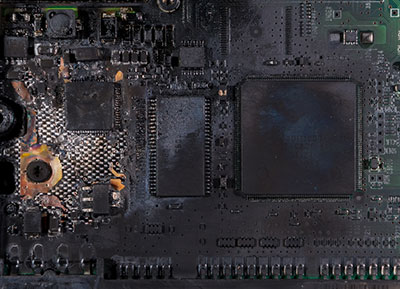Featured
Voltage Regulator Meaning
Voltage Regulator Meaning. When used with a voltage regulator, the compensator can automatically run overexcited at times of high load and underexcited at light loads. A voltage regulator is a circuit that is connected between the power source and a load, that provides a constant voltage despite variations in input voltage or output load.

Voltage regulator definition, a device that controls or maintains the voltage of an electrical circuit. Voltage regulator, any electrical or electronic device that maintains the voltage of a power source within acceptable limits. A voltage regulator is designed to automatically ‘regulate’ voltage level.
Voltage Regulation Is Defined As The Change In Terminal Voltage Expressed As A Fraction Of Full Load Rated Voltage When The Load At A Given Power Factor Is Removed While Keeping The Speed And Field Current Constant.
In dc supply system the voltage can be controlled by using over compound generators in case of feeders of equal length, but in the case of feeders of different lengths the voltage at the end of each feeder is kept constant using feeder booster. Transistor series regulator since q 1 is an npn transistor, v o is found as: Voltage regulator, any electrical or electronic device that maintains the voltage of a power source within acceptable limits.
When Used With A Voltage Regulator, The Compensator Can Automatically Run Overexcited At Times Of High Load And Underexcited At Light Loads.
While voltage control by means of tap changing transformers is the usual method in distribution systems, power factor correcting capacitors can also have an effect on regulating voltages. The following image gives an idea of what a practical regulator looks like. This is standard voltage rating for most electrical appliances here in nigeria.
A Voltage Regulator Is A Circuit That Is Connected Between The Power Source And A Load, That Provides A Constant Voltage Despite Variations In Input Voltage Or Output Load.
The voltage regulator is provided in more than one point in the power system for controlling the voltage variations. The voltage regulator is needed to keep voltages within the prescribed range that can be tolerated by the electrical equipment using that voltage. If load resistance increases, load voltage also increases.
They Also Have A Built In Error Amplifier, Which Samples The Output Voltage (Again Through A Divider), Compares It With The Reference Voltage, Calculates The Difference, And Drives The Output.
A voltage regulator is designed to automatically ‘regulate’ voltage level. The ac ripple voltage that is not removed by the filters is also rejected by the voltage regulators. It basically steps down the input voltage to the desired level and keeps that in that same level during the supply.
There Are Two Variations Of The Same;
The voltage regulator helps accommodate the voltage drop and stabilizes the voltage at 220v (220volts). This makes sure that even when a load is applied the voltage doesn’t drop. Since the zener voltage is constant, the increase in v o causes v be to decrease.
Comments
Post a Comment